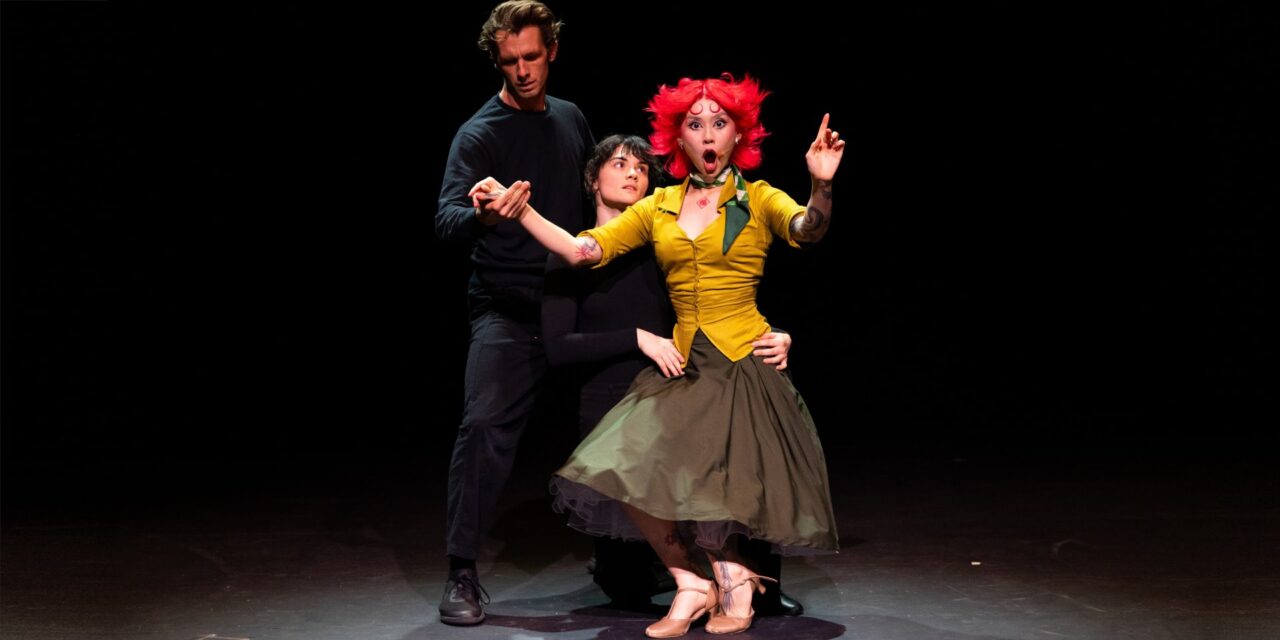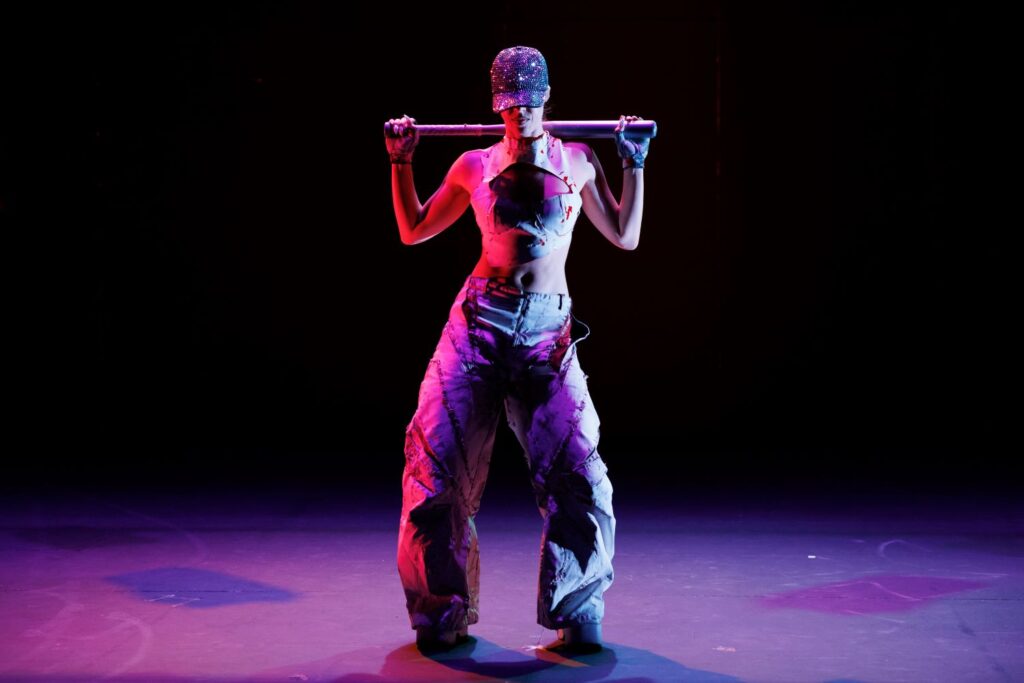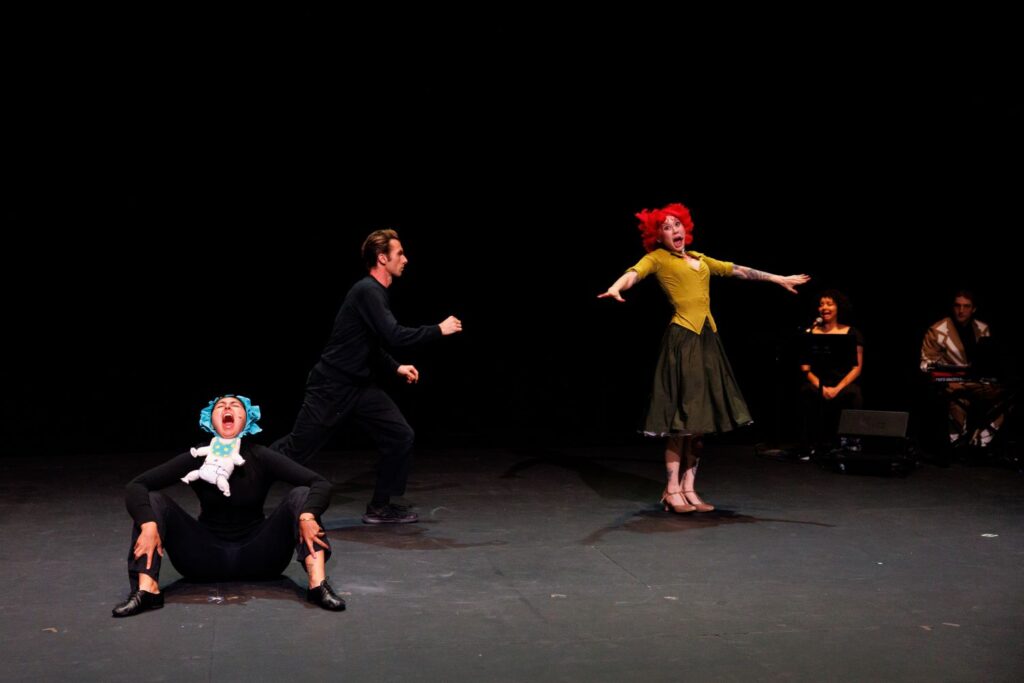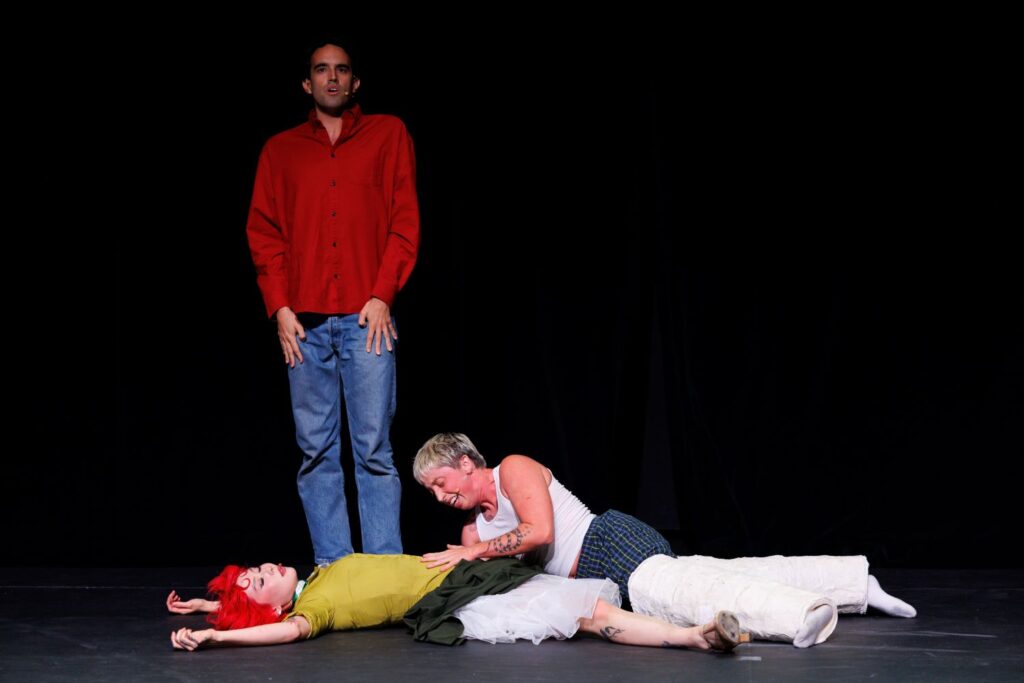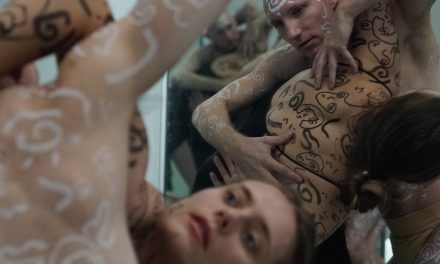In week two of the 2025 REDCAT NOW Festival, a new round of artists tested the limits of duration and rhythm with their presentations of poetry, dance and clowning. When does an action’s repetition run stale? How can a decision or a joke’s tempo impact the unfolding of a story?
The three artistic entities—Divya Victor, Carolyn Chen and American Modern Opera Company (AMOC); Gabriela Burdsall; and Orin Calcagne and Jenson Titus—each shared work with its own intentional relationship to rhythm, ranging from a slow-moving verse poem to a dramatic comedy-horror packed with unexpected, quick turns. The end of the presentation reveals that tempo is an artistic choice that must be used wisely, allowing the story to decide when change must come.
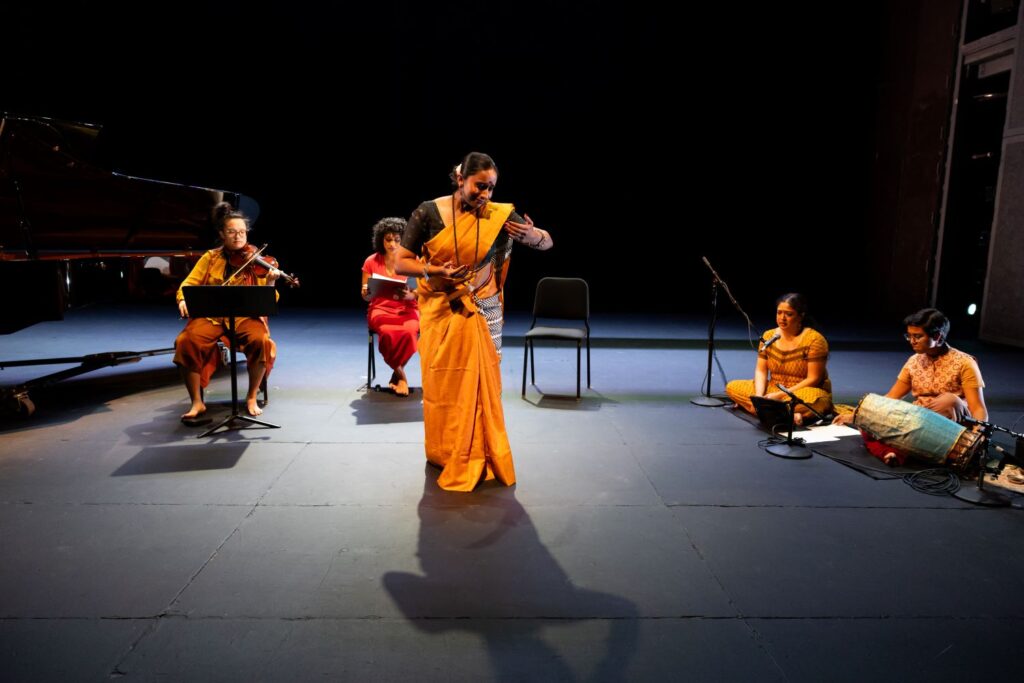
REDCAT NOW Festival Week Two – “Thresholds” by Divya Victor, Carolyn and American Modern Opera Company – Photo by Angel Origgi.
Victor, Chen and AMOC’s “Thresholds” enlivened Victor’s poetry from her books “KITCH” and “CURB” with movement and music. The poetry documented scenes of racist violence and discrimination toward South Asians. The text itself stood poignantly on its own, at one point, parting from the metaphorical to bluntly depict real-life events of violence. Leading up to this major turn, a medley of dance and music paired with the words.

REDCAT NOW Festival Week Two – “Thresholds” by Divya Victor, Carolyn and American Modern Opera Company – Photo by Angel Origgi.
Vocalist Mayuri Vasan stood out as a character, layering Victor’s words with harmonies that replicated moments of hurt and struggle. The work began with sharp and expressive Bharatha Natyam-style dance from Visalini (Vini) Sundaram. She commanded attention, embodying the immigration experience expressed in the poems. While there are exciting moments from the ensemble of artists, it was rare to find a moment of harmony. The tempo tended to get lost in the metaphorical, to the point where the dramatic turn into the literal felt abrupt within the overarching story. After a series of dissonant artistic collisions, the presentation concluded just as strongly as it began, culminating in a poem about a boat and the emotions of great change ahead. Altogether, the artists tap into the rhythm of the boat, slowly making their way off stage.
Gabriel Burdsall’s “MENEO” challenges dance’s ephemerality in an effort to document and preserve Caribbean social dances and her Cuban roots. Throughout the work, Burdsall repeats el meneo, a movement that incorporates the alternating circulation of the chest and hips. The sensually playful movement is presented with an ominous tone. Burdsall enters in bloody white clothes and a disco-ball-esque baseball cap. The costume art by Filio Galvez emphasizes glamour, allowing for the text by William Ruiz Morales and Severo Sarduy to tell a story of ever-changing art and culture. She likens el meneo to a monument that, after standing for so long, is bound to alter and change in its physicality and meaning. As she repeats the step during the entirety of the work, it becomes somatic. She finds a trance-like introspection that allows the cultural dance to change shape. Here, the ephemerality of dance is heightened. The work questions: how do we turn this ephemeral move into a monument?
She moves to the center and four speakers at four corners lower to her level. She is in her own club. She brings out a bat, thumping it against the ground and swinging it to the rhythm of Kiko Faxas’ music, rooted in the syncopated rhythm of Cuban music. As she gyrates her body and swings the bat, the movement changes slightly. She adds a flare of the arm or a bobbing head. As the light designed by Chu-Hsuan Chang shines on her, it refracts off her hat. The work is mesmerizing from beginning to end, not only in its aesthetics, but also in its dialogue with the body. El meneo becomes a character of its own that crafts an intimately romantic (and, at times, chaotic) relationship with Burdsall.
Jenson Titus and Orin Calcagne’s “Mommy” is the most absurd and comical of the night. The comedy-horror play, shaped by clowning, follows an unstable mother (Ren Ye) whose world is shaken by her husband’s (Jake Delaney) affair with his gay assistant (Meadow Holczer), and she begins to pull her family into her emotional chaos as she processes the news. The work is a fast-paced rollercoaster that excites with its absurdity and playful approach to movement.
Narrated by the baby of the family (Reshma Meister), the world unfolds on a blank stage. With hyper-specific use of gestures and clowning, the performers shape the family house. With the help of panel props, it appears as if Mommy is running up and down the stairs, gripping onto the rail and hiking up her legs with every step. Each word is exaggerated with comedic gestures and sharp shifts in facial expressions, such as the darting of eyes. Meanwhile, their quips and punches are paired with live foley (Caro Shannah Levy, Ian Bratschie and Nathan Wolfe) and music, composed and performed by Rubin Hohlbein. Director Titus and writer Calcagne craft a perfect orchestra of movement, sound and voice.
Overall, the work is stellar in its ability to entertain with absurd antics layered over heavy topics. One of the most impactful elements of the performance was when Mommy finally spoke. Previously, Ye lip-synced over another performer, Tessa Claire Hersh, sitting in the corner, reciting their lines. When Mommy finally confronts Daddy about his infidelity, the lip-syncing ends. The delivery makes it surprisingly heartbreaking, piercing the comical bubble the ensemble created. In “Mommy,” you get hooked by the otherworldly performances and get won over by its emotional undertones about agency and love.
REDCAT NOW Festival’s second week centered around the artist’s playfulness with tempo, culminating in an evening performance that reflected various textures of time.
To learn more about REDCAT, please visit their website.
Written by Steven Vargas for LA Dance Chronicle.
Featured image: REDCAT NOW Festival Week Two – “Mommy” by Jenson Titus and Orin Calcagne – Photo by Angel Origgi.

